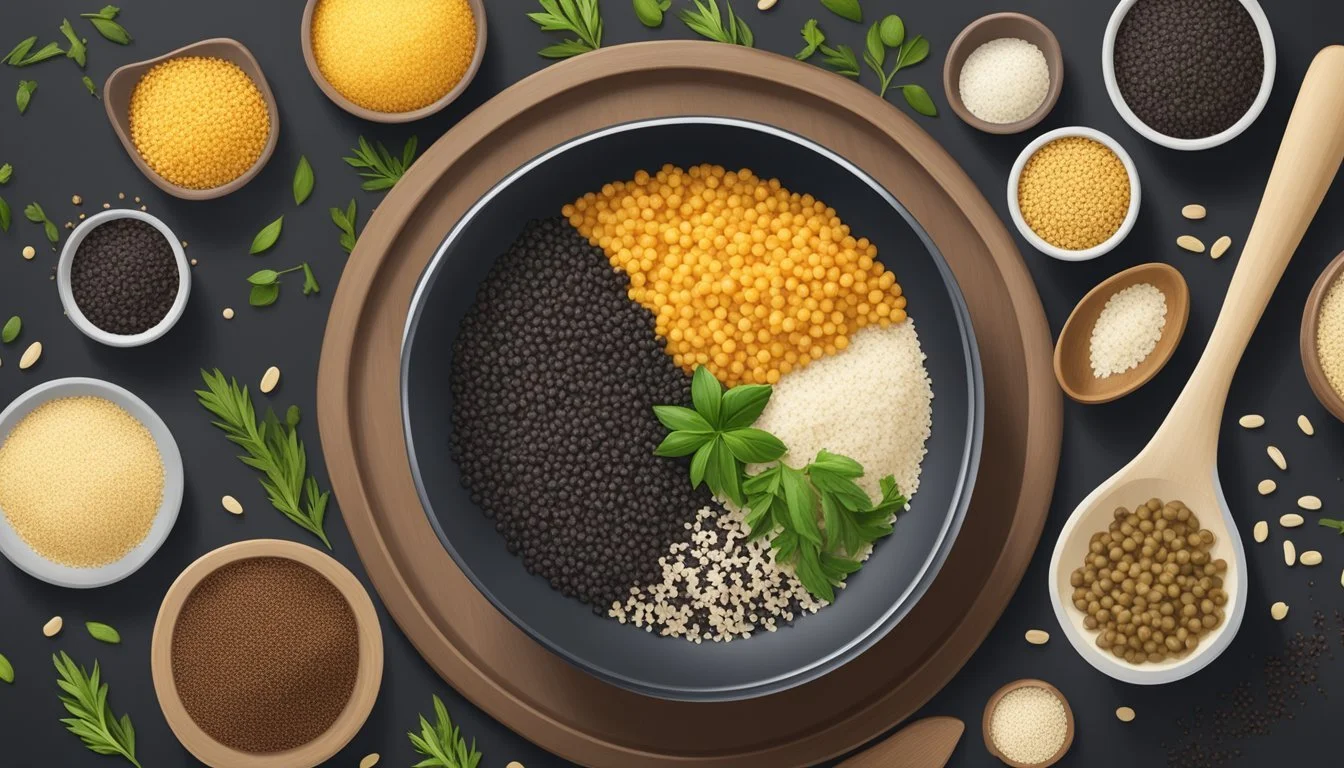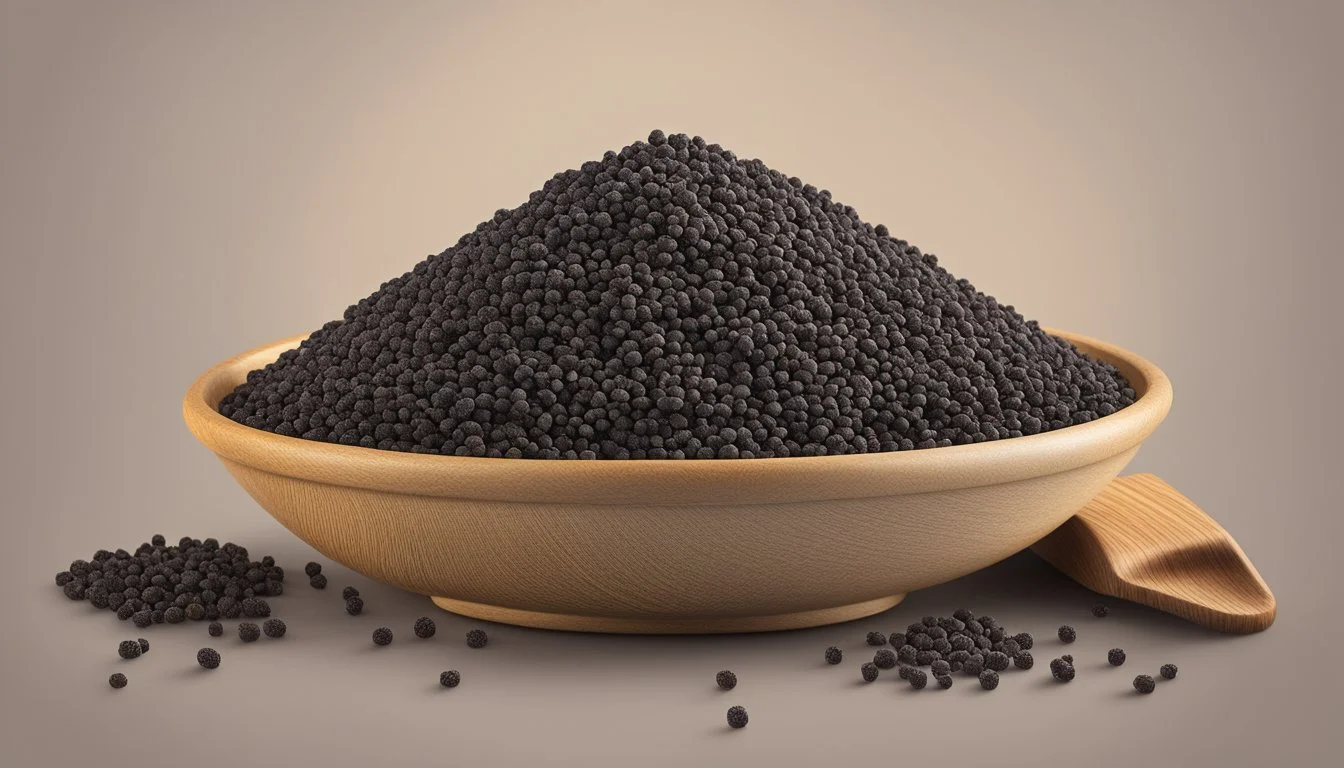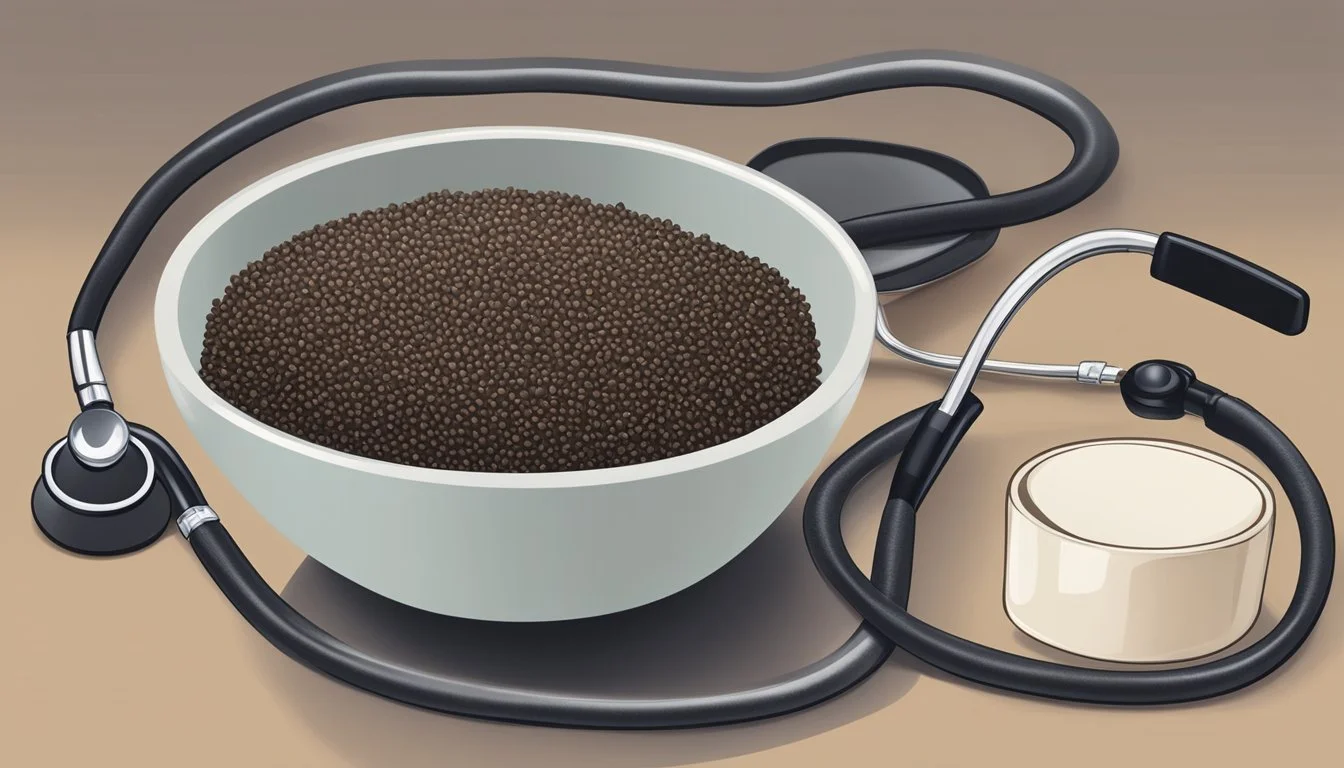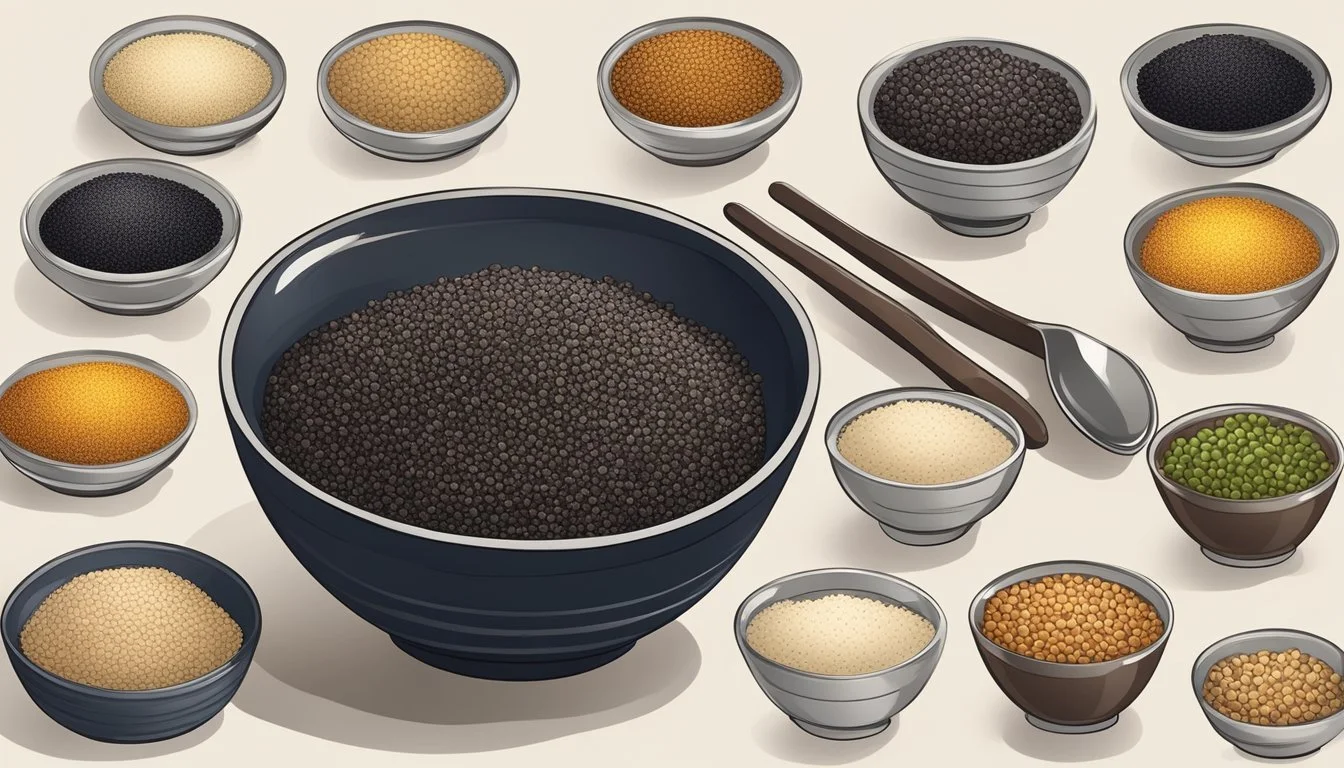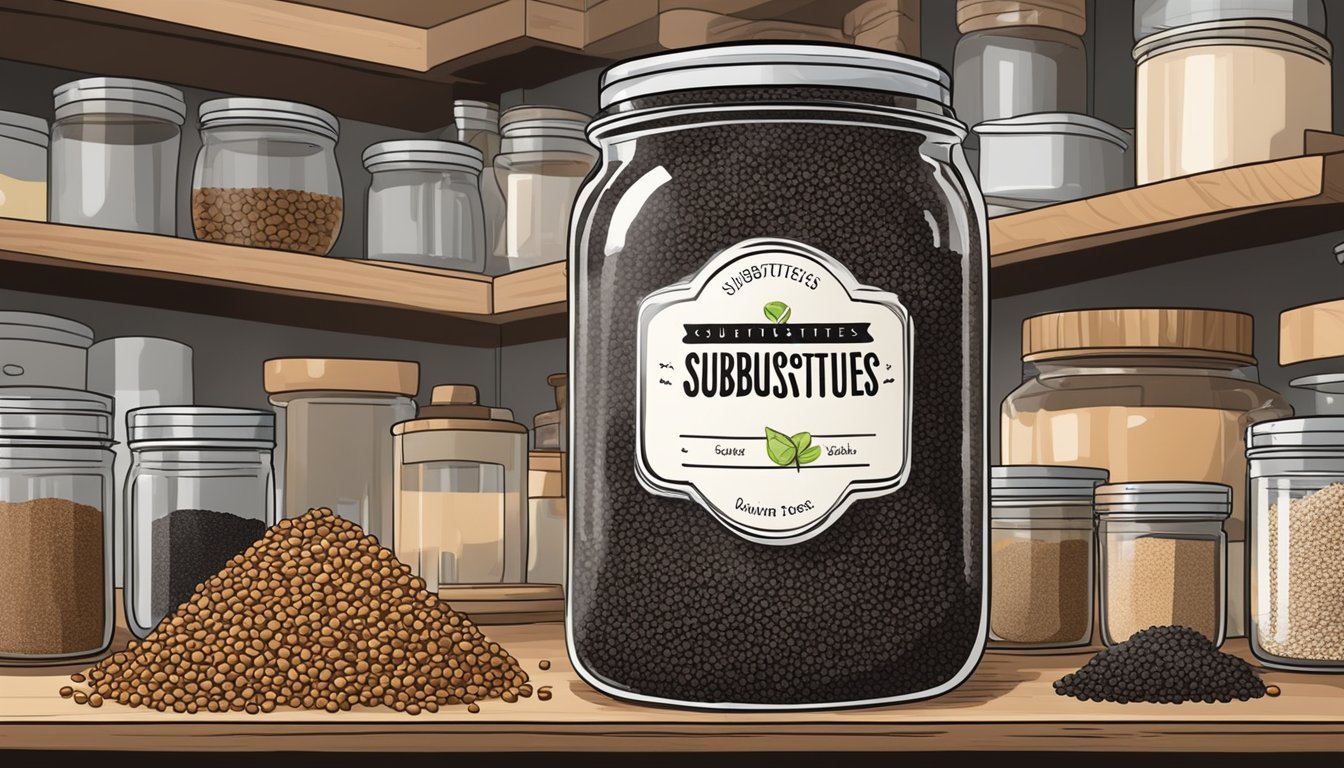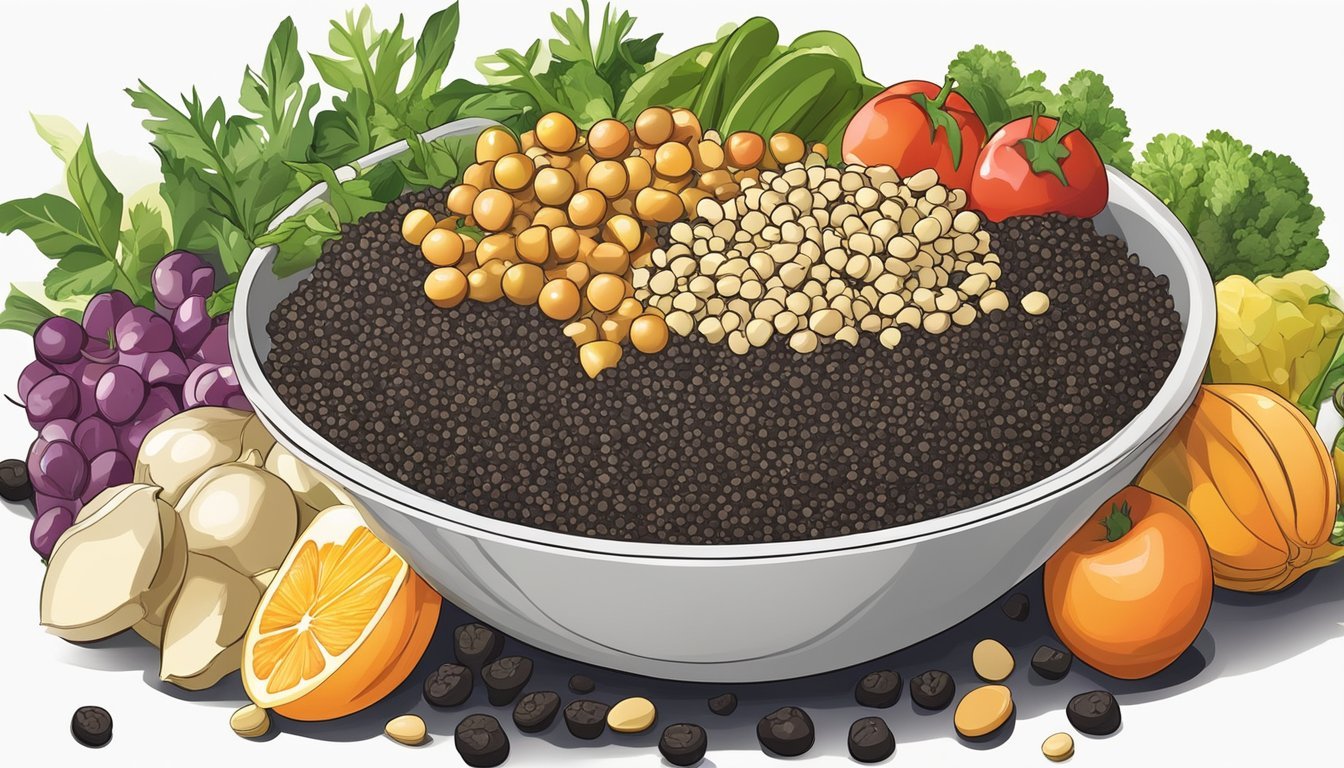Black Quinoa Substitutes
Best Alternatives for Every Recipe
When it comes to finding substitutes for black quinoa, there are several nutritious and delicious options that can seamlessly fit into a healthy diet. Brown rice, a common substitute, offers a similar texture and is packed with fiber and essential nutrients. Whether paired with savory meats or used in hearty salads, brown rice is a versatile gluten-free alternative.
Another excellent option is wild rice, which not only mirrors black quinoa's nutritional profile but also enhances dishes with its unique flavor and texture. Wild rice works exceptionally well in soups, salads, and stuffed vegetables, making it a flexible ingredient in various recipes.
For those seeking a slightly crunchier texture, black quinoa's earthy taste can be mimicked by black lentils. High in protein and fiber, black lentils are a great addition to salads and stews, offering both nutritional benefits and culinary variety. This adaptability ensures that whether it's for a gluten-free diet or simply a change in flavor, there are plenty of alternatives to black quinoa that won't disappoint.
Nutritional Profile of Black Quinoa
Black quinoa is notable for its impressive nutritional profile, providing essential nutrients that contribute to a healthy diet. Its benefits range from high protein content to a rich supply of dietary fiber and antioxidants.
Comparing Protein Content
Black quinoa is a rich source of protein, containing about 8 grams of protein per cup. It is considered a complete protein, providing all nine essential amino acids necessary for human health.
This makes black quinoa particularly valuable for those on plant-based diets, who may otherwise have difficulty obtaining sufficient complete proteins.
Compared to other grains, such as brown and white rice, black quinoa offers more protein, making it a superior choice for muscle repair and overall cellular function.
Fiber and Mineral Richness
Dietary fiber is another strong point for black quinoa, with approximately 5 grams of fiber per cup. Fiber aids digestion, helps maintain healthy blood sugar levels, and supports cardiovascular health.
Mineral content is also significant in black quinoa. It is particularly high in iron and magnesium. Iron is essential for oxygen transport in the blood, while magnesium supports muscle function and a healthy nervous system.
The fiber and mineral richness of black quinoa make it a powerful addition to any diet.
Caloric Comparison
In terms of caloric content, black quinoa provides around 220 calories per cooked cup. This caloric value is moderate, making it a good option for those looking to manage their weight while still obtaining essential nutrients.
Compared to other grains, like white rice, which has similar calories, black quinoa offers more nutrient density. This means you gain more vitamins, minerals, and beneficial compounds per calorie consumed.
Antioxidant Properties
Black quinoa boasts a variety of antioxidants, including vitamin C and flavonoids, which can help combat oxidative stress within the body. These antioxidants are crucial in protecting cells from damage and supporting overall health.
The presence of these compounds in black quinoa can help reduce inflammation and strengthen the immune system.
This unique property differentiates black quinoa from other grains, making it not just a source of basic nutrition but also a contributor to long-term health benefits.
Understanding the Unique Characteristics of Black Quinoa
Black quinoa is a versatile and nutrient-packed grain known for its distinct flavor, rich cultural history, and broad culinary applications.
Flavor Profile
Black quinoa stands out with its nutty and earthy flavor profile, offering a more robust taste compared to white or red quinoa. Its grains are slightly crispier and chewier. This unique texture and taste make it an excellent addition to diverse dishes, enhancing both taste and mouthfeel.
Cultural and Historical Significance
Originating from the Andean region of South America, black quinoa has been cultivated for thousands of years. It was a sacred crop to the Incas and continues to be a staple in various South American diets. This ancient grain's cultivation plays a crucial role in local agriculture, preserving traditional farming practices and supporting local economies.
Culinary Versatility
As a complete protein source and being gluten-free, black quinoa is suitable for various dietary needs. Its versatility extends to both savory and sweet dishes, from salads and sides to breakfast bowls and desserts. Its ability to absorb and complement different flavors makes it a popular ingredient in global cuisines. This versatile grain can be a standout in any meal.
Top Substitutes for Black Quinoa
When seeking alternatives to black quinoa, a variety of grains, legumes, seeds, nuts, and non-grain options can be used. These substitutes are rich in nutrients and offer versatility in many recipes.
Grains as Substitutes
Grains are a common substitute for black quinoa due to their similar nutritional profiles and culinary uses. Brown rice is a popular option, providing a nutty flavor and chewy texture ideal for savory dishes. Millet is another nutrient-rich choice, offering protein and fiber. Buckwheat, despite its name, is gluten-free and packed with minerals like magnesium and fiber. Wild rice has a robust, earthy flavor and is an excellent substitute in pilafs and salads. Amaranth and farro also make great alternatives due to their high nutrient content and versatility in various dishes.
Legumes for Protein Enrichment
Legumes can provide a protein boost when substituting black quinoa. Lentils stand out for their high protein and fiber content and come in various types such as green and red, which cook quickly and can be used in soups and salads. Chickpeas are another high-protein legume, offering a creamy texture that complements many dishes like stews, salads, and even as roasted snacks. Black beans can replace quinoa in burrito bowls and salads, adding a hearty texture and rich flavor. Edamame (young soybeans) is also a great choice, especially in Asian-inspired dishes or as a snack.
Utilizing Seeds and Nuts
Seeds and nuts can serve as substitutes, providing both texture and nutritional benefits. Chia seeds are highly nutritious, offering omega-3 fatty acids and protein. They can be used in puddings, smoothies, and sprinkled over salads. Sunflower seeds are rich in vitamins and minerals, adding a crunchy texture when used as toppings in various dishes. Pumpkin seeds bring a similar crunch and are high in magnesium and antioxidants. Almonds can be chopped or sliced, adding protein and healthy fats to salads and casseroles. Sesame seeds can be used in a variety of dishes, offering a unique flavor and texture.
Non-Grain Alternatives
Non-grain substitutes offer unique textures and nutritional profiles that can replace black quinoa. Cauliflower rice is a low-carb option that can mimic the texture of quinoa in salads and bowls. Spaghetti squash can serve as a substitute in recipes that call for a grain base, offering a fun, noodle-like texture. Zucchini noodles, or zoodles, provide a fresh, light alternative, especially in stir-fries and salads. Sweet potatoes can be diced and roasted, used as a base or side dish. These non-grain options are particularly useful for those adhering to a gluten-free diet or looking for a lower-calorie substitute.
Health Considerations for Substituting Black Quinoa
Choosing the right substitutes for black quinoa involves careful consideration of gluten-free, vegan, low-carb, and keto-friendly options. Additionally, these substitutes can have significant benefits for digestive health and implications for disease prevention.
Gluten-Free and Vegan Alternatives
For those with gluten intolerance or following a vegan diet, brown rice and quinoa substitutes like chickpeas and lentils are excellent choices. Brown rice is a whole grain free of gluten and rich in fiber, vitamins, and minerals. It provides a nutty flavor comparable to black quinoa. Chickpeas and lentils are versatile options for vegans, adding protein and essential nutrients without gluten.
Low-Carb and Keto-Friendly Options
Cauliflower rice and broccoli rice are suitable substitutes for a low-carb or keto diet. They both have minimal carbohydrate content and calories, making them ideal for those on keto or looking to manage weight. With high fiber and essential vitamins, they also support overall health. Incorporating these vegetables can keep the diet diverse without sacrificing nutritional benefits.
Benefits for Digestive Health
Choosing high-fiber alternatives to black quinoa, such as barley and legumes, can significantly improve digestive health. Barley is rich in dietary fiber, which aids in regular bowel movements and prevents constipation. Legumes, including beans and peas, provide prebiotics that promote healthy gut bacteria. These foods also help in maintaining a balanced digestive system, crucial for overall well-being.
Implications for Disease Prevention
Substitutes like brown rice and broccoli may help in disease prevention. Brown rice contains antioxidants and other compounds beneficial for heart health and reducing the risk of chronic diseases. Broccoli is packed with vitamins, minerals, and fiber, known for its role in cancer prevention. Incorporating these substitutes into the diet can offer protective health benefits, aiding in the management and prevention of various diseases.
Culinary Applications and Recipe Adaptations
Black quinoa's unique flavor and nutritional profile make it an excellent base for diverse culinary applications. When substituting black quinoa, choosing alternatives that complement various dishes and adapt well in different cooking methods is crucial.
Adapting Recipes with Substitutes
Substituting black quinoa in recipes requires choosing grains or seeds that offer similar textures and nutritional benefits. Brown rice can be an excellent substitute in most recipes due to its nutty flavor and chewy texture. Barley also works well in soups and stews. For gluten-free options, millet provides a comparable texture, while amaranth offers a slightly sweet flavor that pairs well with both sweet and savory dishes.
Experimenting with these alternatives can maintain the integrity of the dish while offering varied nutritional benefits.
Creating Flavorful Salads
Substituting black quinoa in salads can transform the dish without compromising taste or nutritional value. Wild rice adds a rich, earthy flavor that pairs well with roasted vegetables and nuts. Farro enhances Mediterranean cuisine salads, providing a chewy texture and boosting the protein content.
Including grains like bulgur can also add a pleasant, nutty taste, especially when combined with fresh herbs and a lemon vinaigrette.
Cooking Methods for Substitutes
Cooking methods may vary depending on the substitute used for black quinoa. Brown rice should be cooked with a ratio of 1:2, rice to water, and simmered for about 45 minutes. Barley should be boiled with a 1:3 ratio of barley to water and cooked until tender, which takes around 40 minutes.
For a quicker option, millet cooks in approximately 15-20 minutes with a 1:2.5 ratio. Farro requires a pre-soak and cooks similar to barley, providing a hearty texture. Adjusting cooking times and liquid ratios ensures the substitutes achieve the desired consistency.
Substitutes in International Cuisine
Integrating quinoa alternatives into international recipes allows for creativity and nutritional diversity. Freekeh, a staple in Middle Eastern cuisine, can replace black quinoa in pilafs and stuffed vegetables. Polenta can be used in Italian dishes as a base for toppings or in layered dishes like lasagna. Chickpeas can be an alternative in Indian curries and salads, adding protein and a different texture.
These substitutes maintain the essence of traditional dishes while offering a unique twist. Experimenting with various grains and pulses not only diversifies the diet but also brings out different flavors and textures suited to specific culinary traditions.
Practical Tips for Choosing and Using Quinoa Substitutes
When selecting substitutes for black quinoa, one should consider various factors such as taste, texture, nutritional value, and cost. Each alternative brings unique properties to complement different dishes and dietary needs.
Selecting the Right Substitute
To choose the right substitute for black quinoa, consider the specific characteristics of your dish. Brown rice and wild rice are excellent for their chewy texture and nutty flavor, similar to quinoa.
For a low-calorie option, bulgur is ideal, offering a fluffy texture. Teff, rich in fiber and protein, is perfect for enhancing nutritional value. Amaranth provides a more earthy taste and higher protein content, making it suitable for salads and porridges.
Cost Considerations
The cost of quinoa substitutes can vary significantly. Quinoa itself is often more expensive than other grains. Brown rice and bulgur tend to be more affordable and widely available.
Teff and amaranth, being more niche and nutrient-dense, might be costlier but are worth the investment for their health benefits. Assess your budget and dietary priorities to find a balance between cost and nutritional value.
Preparation and Storage Options
Proper preparation and storage are crucial for maintaining the quality of your chosen substitutes. Brown rice and wild rice should be rinsed and cooked in a 2:1 water-to-grain ratio, similar to quinoa. Bulgur requires soaking in boiling water for about 10 minutes to achieve a fluffy texture.
Teff can be cooked as porridge by simmering in water or broth. Store cooked grains in airtight containers in the refrigerator for up to a week. Uncooked grains should be kept in a cool, dry place to maintain freshness.
Taste and Texture Comparisons
When comparing substitutes, taste and texture are critical. Brown rice has a mild flavor and chewy texture, making it versatile. Wild rice offers a nuttier, more robust flavor with a firmer texture.
Bulgur provides a delightfully fluffy and light texture with a slightly nutty flavor. Teff, with its earthy, slightly sweet taste, creates a unique chewiness in dishes. Each substitute's flavor and texture should complement the primary ingredients of your dish.
Shopping and Storage
Understanding how to buy and store black quinoa substitutes is essential for maintaining their quality and maximizing their shelf life. This guide provides tips on selecting the best substitutes and storing them properly.
Buying Guide for Substitutes
When shopping for black quinoa substitutes, consider the texture and flavor you desire in your recipes. Brown rice and buckwheat have similar nutty flavors. Cauliflower rice and broccoli rice offer low-carb alternatives. Look for whole grains with minimal processing to ensure higher nutritional value.
For those who prioritize gluten-free options, millet and amaranth are excellent choices. Check the packaging for any signs of moisture or damage which may indicate contamination or spoilage. Often, bulk bins in health stores provide fresh and cost-effective selections.
Storing Grains and Alternatives
Proper storage is crucial to extending the shelf life of black quinoa substitutes. Grains like brown rice and barley should be stored in airtight containers in a cool, dry place to prevent pests and moisture. Buckwheat and millet also benefit from this method.
For pseudo-grains like amaranth, airtight glass jars or resealable plastic bags can help maintain freshness. Cauliflower rice and broccoli rice should be kept in the refrigerator for short-term storage. Labeling containers with purchase dates ensures that older stock gets used first, reducing waste.
Extending Shelf Life through Proper Storage
To extend the shelf life of grains and alternatives, consider freezing. Freezing quinoa and other grains can preserve their taste and nutritional quality for up to six months. Use freezer-safe containers for best results.
For processed substitutes like cauliflower rice, use a food processor before freezing to save prep time. Ensure all grains and alternatives are completely dry before storing to prevent mold growth. Regularly inspect stored items for signs of spoilage. This proactive approach helps maintain a well-stocked pantry with quality substitutes ready for use.
Considerations for a Healthy and Balanced Diet
Choosing substitutes for black quinoa can be nutritionally beneficial. It's important to pay attention to factors such as protein content, fiber, and essential vitamins and minerals to maintain a healthy diet.
Incorporating a Variety of Substitutes
Incorporating a variety of black quinoa substitutes into one’s diet ensures a broader intake of nutrients. Brown rice, for instance, is rich in magnesium and fiber, which aid in digestion and maintaining normal muscle function. Buckwheat not only is gluten-free but also contains a good amount of antioxidants.
Wild rice offers complete protein, similar to quinoa, making it particularly suitable for vegan diets. It also has a low glycemic index, which is beneficial for managing blood sugar levels. Including teff can enhance one’s diet with additional vitamin C and essential amino acids.
Utilizing legumes like lentils or chickpeas in place of quinoa can increase the intake of protein and essential minerals like iron and potassium. These options also provide significant fiber content and are low in calories, promoting cardiovascular health.
By alternating these diverse substitutes, anyone can create balanced, nutritionally complete meals while addressing specific dietary needs, such as gluten-free and low-carb diets. This diversification helps ensure adequate intake of vital nutrients and supports overall well-being.

